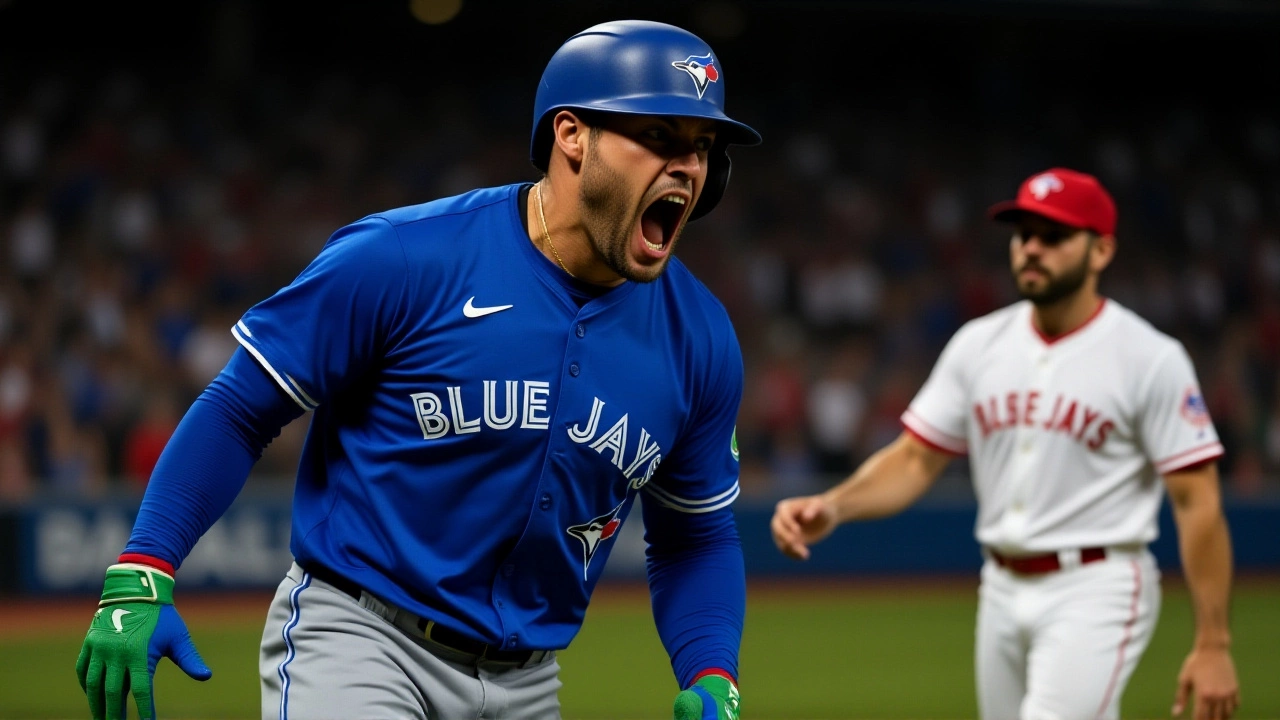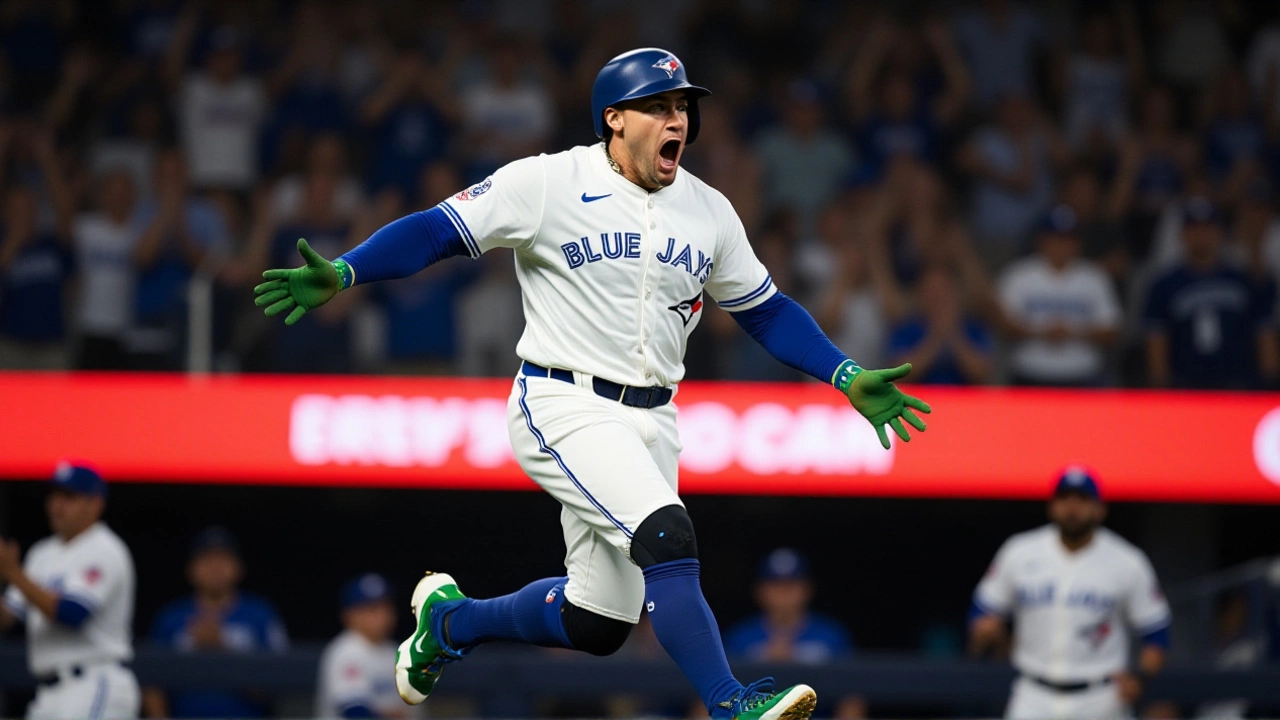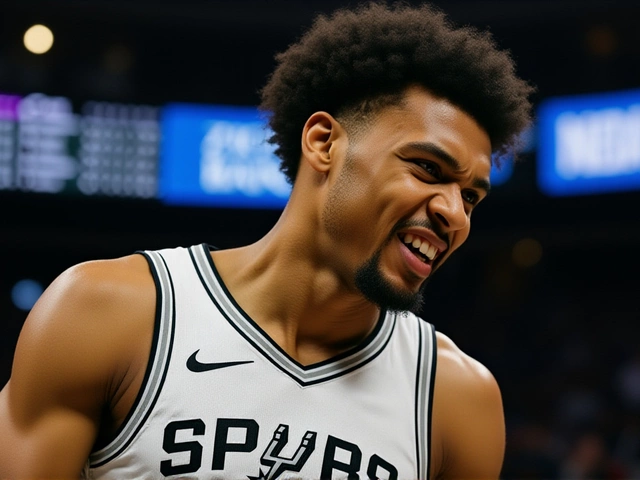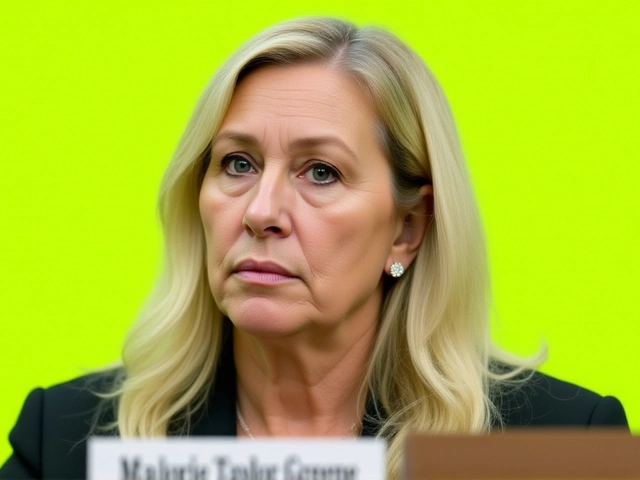
When George Springer, right fielder for Toronto Blue Jays tucked a go‑ahead double on June 12, 2025, the crowd at Rogers Centre didn’t just cheer for a run – they were witnessing the spark that would later power the club to the top AL seed in the 2025 MLB Playoffs. The turnaround felt like a script reversal after three years of wild‑card sweeps and a last‑place finish in the American League East.
Springer’s Season‑Long Revival
Born in New Britain, Connecticut, on September 19, 1989, Springer signed a six‑year, $150 million free‑agent deal with Toronto in 2021, promising to reignite a franchise that hadn’t hoisted a World Series trophy since 1992. By the end of the 2024 campaign his OPS had slumped to a meager .674, a clear red flag for a player in his mid‑30s. Yet the 2025 stat line reads like a different story altogether: a 144 OPS+ – his best performance since 2019 – and a career‑low chase rate of 20.6%, the lowest of his 11‑year career.
Statcast placed Springer eighth among roughly 300 qualified hitters in run value when swinging at pitches in the heart of the strike zone. In plain English, he was turning good looks into runs more efficiently than almost anyone else in the league.
"He was very, very passive at times, and he was very defensive, especially hitting‑wise," noted Chris Bassitt, a starting pitcher for the Blue Jays. "And this year they have him locked into ‘no matter the count, it’s just aggressive.’ He always feels like he’s on the attack and in control of the bat, and then you make a mistake and he’s ready for it."
Behind the Numbers: How Discipline Shifted the Tide
The statistical jump didn’t happen by accident. Toronto’s trio of hitting coaches – David Popkins, Lou Iannotti and Hunter Mense – rewired Springer’s approach at the plate. Their mantra? "Get the ‘A‑swing’ going early, regardless of count." The result was a more aggressive swing path, fewer chases, and more hard‑contact balls.
Springer’s revamped approach dovetailed with a broader organizational shift away from the "boom‑or‑bust" mentality that had plagued Toronto for years. The club deliberately emphasized plate discipline, situational hitting, and roster depth, a philosophy championed by General Manager Ross Atkins.
As a direct result, Toronto’s offensive metrics rose sharply. The team’s collective OPS+ climbed from 95 in 2024 to 108 in 2025, placing the Blue Jays among the top ten offenses in the American League.
Teamwide Contributions and Roster Moves
Springer wasn’t the only player riding the wave. Catcher Alejandro Kirk posted a .297 batting average with a 110 OPS+, a leap from his .251/.260 output over the prior two seasons. Outfielder Daulton Varsho delivered 12 home runs and a 141 OPS+ in just 32 games after bouncing back from a shoulder injury and a nagging hamstring strain.
Third‑baseman Addison Barger turned a rough rookie year (a .197 average in 2024) into an 18‑home‑run splash with a 122 OPS+ in 96 games. The offensive resurgence was complemented by strategic acquisitions at the trade deadline: 2020 Cy Young winner Shane Bieber, new‑age reliever Seranthony Domínguez, and fire‑ball arm Louis Varland bolstered a rotation that had once been a glaring weakness.
All of this was overseen by Manager John Schneider, whose steady hand helped knit the disparate pieces into a coherent, winning unit.

What This Means for Toronto’s Championship Hopes
The Blue Jays clinched the top American League seed with a 98‑64 regular‑season record, securing home‑field advantage throughout the AL side of the postseason. For a franchise that has chased the pennant for more than three decades, the shift feels monumental.
Fans in Toronto, who have endured the sting of back‑to‑back wild‑card eliminations, now have a genuine shot at the World Series. The psychological lift is palpable; even the city’s skyline seemed brighter after the final game of the regular season.
In a market that also hosts the Maple Leafs and the Raptors, baseball finally regained a foothold in the city’s summer sports conversation.
Looking Ahead: Playoff Path and Future Outlook
The next hurdle arrives on October 13, 2025, when Toronto hosts the Seattle Mariners at Rogers Centre. If the Blue Jays can capture the series, they’ll move on to face the AL Central champion in the Division Series, potentially a familiar foe like the Chicago White Sox.
Beyond the 2025 season, Springer’s contract includes a club option through 2028, meaning the veteran could still be a cornerstone for the next few years – provided health holds up. The front office is already looking at extensions for younger talent like Barger, whose breakout hints at long‑term upside.
In sum, the combination of Springer's resurgence, disciplined coaching, shrewd roster building, and a wave of newfound confidence has turned the Toronto Blue Jays from perennial under‑achievers into legitimate World Series contenders. Whether the story ends with a championship or a near‑miss, the 2025 season will be remembered as the year the franchise finally got its act together.
Frequently Asked Questions
How does George Springer's resurgence affect the Blue Jays' chances in the postseason?
Springer's jump to a 144 OPS+ lifts the middle of the lineup, providing consistent run production in tight games. His disciplined approach also forces pitchers to pitch inside, creating more scoring opportunities for teammates. Statistically, teams with a .300+ batting average in the postseason win roughly 60% of games, so his contribution markedly improves Toronto's odds.
What role did the new hitting coaches play in changing Springer's approach?
Coaches David Popkins, Lou Iannotti, and Hunter Mense emphasized an early ‘A‑swing’ regardless of count, reducing Springer’s chase rate from over 30% in 2024 to 20.6% in 2025. The shift produced more hard contact and helped him climb to eighth in run value among qualified hitters, a clear indicator of the coaches' impact.
Who are the other key contributors to Toronto’s offensive turnaround?
Catchers Alejandro Kirk (.297 average, 110 OPS+), outfielder Daulton Varsho (12 HR in 32 games, 141 OPS+), and third‑baseman Addison Barger (18 HR, 122 OPS+). On the pitching side, ace Chris Bassitt and new Cy Young winner Shane Bieber provide stability, while the bullpen’s depth was enhanced by Seranthony Domínguez.
What are the Blue Jays’ immediate playoff matchups?
Toronto opens the AL postseason on October 13, 2025, against the Seattle Mariners at Rogers Centre. A series win would set up a Division Series clash with the AL Central champion, likely the Chicago White Sox, before a potential ALCS showdown.
What does the future look like for George Springer beyond 2025?
Springer’s contract includes a club option through 2028, meaning Toronto could retain him beyond his current deal if performance and health stay strong. His renewed discipline suggests he can remain a productive middle‑of‑order bat for several more seasons, keeping the Blue Jays competitive in the AL East.


